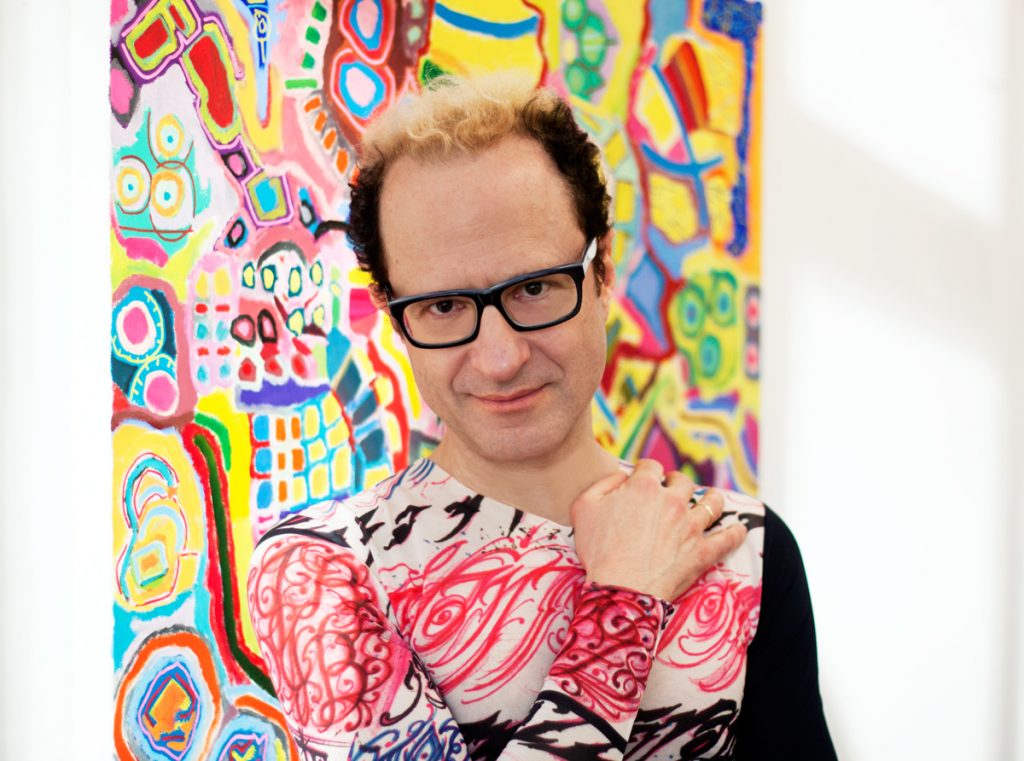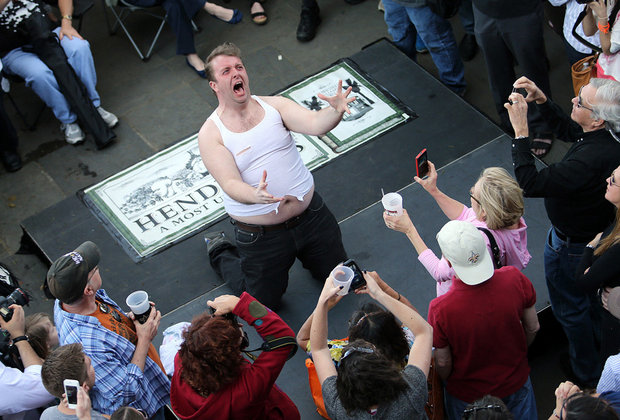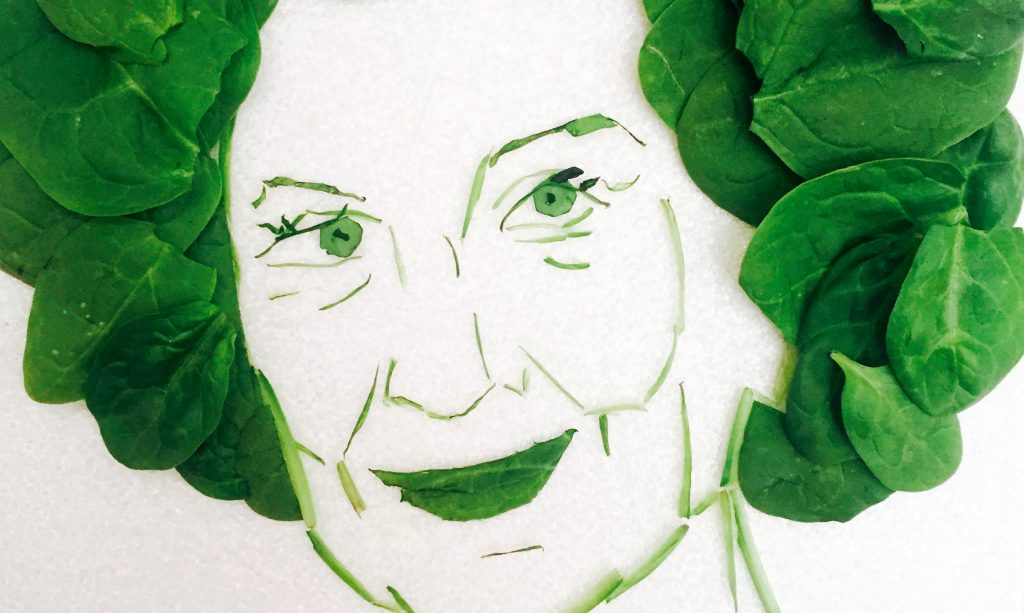Excerpts and curios from around the web:
 “The asterisk we might think of as an anus,” says Stuart Horodner, director of the Art Museum at the University of Kentucky in Lexington. He’s describing the abstract-figurative mashup of Wayne Koestenbaum’s painting, Everything Is Nice (2014), which featured in a solo exhibition curated by Horodner last fall. Koestenbaum, widely known for his poetry and criticism, opened a new show over the weekend at 356 Mission Road in Los Angeles. Says Koestenbaum of the creative process: “There’s always an element of unsafety and defacement. I’m always staining or fouling something. But the fact that I use colors I love, colors that are bright and happy, I feel I am operating on the sunny side of experience, even if the act itself—engaging with paint—feels premised on desecration. It’s not logical, but it’s what I feel.”
“The asterisk we might think of as an anus,” says Stuart Horodner, director of the Art Museum at the University of Kentucky in Lexington. He’s describing the abstract-figurative mashup of Wayne Koestenbaum’s painting, Everything Is Nice (2014), which featured in a solo exhibition curated by Horodner last fall. Koestenbaum, widely known for his poetry and criticism, opened a new show over the weekend at 356 Mission Road in Los Angeles. Says Koestenbaum of the creative process: “There’s always an element of unsafety and defacement. I’m always staining or fouling something. But the fact that I use colors I love, colors that are bright and happy, I feel I am operating on the sunny side of experience, even if the act itself—engaging with paint—feels premised on desecration. It’s not logical, but it’s what I feel.”
Prince announced at a recent event in New York that he’s penning a memoir, tentatively titled The Beautiful Ones (Spiegel & Grau, 2017). “You all still read books, right?” he asked the crowd. No word yet on the dollar amount of the advance, but publishers reportedly presented him with “an offer I can’t refuse.” Ah, publishing. It was the best of times, it was the worst of times. In any case, let’s hope for some insight into that brawl with Sinead O’Connor back in the nineties.
Albert Camus is here to pull the pants down on the real reason you upload photos to Facebook. “If Albert Camus were alive today,” Michael Seidlinger argues over at Lit Hub, “he’d write The Myth of Sisyphus about our massive, shared, ubiquitous digital brain—social media rendered as yet another component of the absurd.” But don’t be too hasty in deleting that profile. “Now, to refuse social media is to accept that invitation to death. Our revolt is to reject the call to simplify, our activity of consciousness occurs online. So we remain, posting, scrolling the newsfeed, curating the timeline—our ‘freedom’ inheres in the Internet’s absence of moral proscription, it’s rejection of codes. It is easy for the digital self to become codeless, to be free. Maybe it borders on a kind of apathy, but it is freedom nonetheless.”
If your own personal dachshunds are leaving you feeling like something’s missing, consider spending the weekend with the sensational specimens available from the New York Public Library. The collection includes, among other titles, Albert, The Dog Who Liked to Ride in Taxis (in which a dachshund “embarks on a taxicab adventure to the airport”), Lumpito and the Painter from Spain (based on the true story of Picasso and his canine muse), and The End of the Road (in which “Maxie McNabb and her miniature dachshund, Stretch, investigate a murder that shatters the quiet in their hometown of Homer, Alaska”).
Maybe an iPhone 7 isn’t what you need at all, maybe you need a portal to the voice of Hugo Ball imparting strange, incantation-like noises through a receiver. In a new exhibition at the Yale University Art Gallery, “Everything Is Dada,” visitors can “pick up facsimiles of old-fashioned telephones to listen to recordings of Dada sound poetry, nonsensical combinations of deconstructed words. A rousing recitation of one, ‘Karawane,’ opens with the line ‘jolifanto bambla o falli bambla.’” Well, it can’t be any worse than fielding calls from your college’s alumni association. Dada is an armadillo, but is it a cheesecake, amiright?
Mayor Fran Lebowitz kindly asks that you not visit the Big Apple: “The other day I read that last year 58 million tourists came to New York … where a puny eight million people are trying to live. Unless they own a hotel chain, I don’t think a single one of these eight million people are happy about this. Without these tourists, New York would be fantastic. I don’t want them to come. Stay home! I have a double policy, which would also solve immigration: I would stand at the border of New York City and I would say, ‘You can come here to live, but you can’t come here to visit.’ If you’re coming here, you better be immigrating. Immigrants are good, tourists are bad. I would stand at the border and say, ‘You’re coming here to live, really? With one suitcase? No, you’re not. Go back.’ I think that would solve both problems. And just think how fantastic New York would be. The housing problem would be solved completely. Bloomberg was always bragging how many hotels were being built—I remember seeing him on the news, saying, ‘And this is the nine millionth hotel in Queens.’ Queens! Because it’s everyone’s dream: ‘Someday I’m going to go to New York and go to Queens.’ Every place there’s a hotel, there’s one less apartment building. So just think, if there were, say, only 10 percent of the hotels that exist now, there would be all these apartments for people who live in New York, as opposed to people visiting New York. And then all this junk in the theater, we would no longer need the kind of stuff that tourists like. People say, ‘Well, what would you do with Times Square?’ And I always think, ‘Gee, I don’t know. There could be butchers and bookstores.’ Like a city. Things that New Yorkers need. There’s no reason why it has to be the way it is. People say, ‘Oh, did you like New York better when it was filthy and dangerous?’ No. But why do these things have to be either/or? Couldn’t it be clean, or cleaner. I mean, New York’s not exactly antiseptic. It could be clean and less dangerous, and not horrible, not under a tidal wave of tourists.”
Bloomberg was always bragging how many hotels were being built—I remember seeing him on the news, saying, ‘And this is the nine millionth hotel in Queens.’ Queens! Because it’s everyone’s dream: ‘Someday I’m going to go to New York and go to Queens.’ Every place there’s a hotel, there’s one less apartment building. So just think, if there were, say, only 10 percent of the hotels that exist now, there would be all these apartments for people who live in New York, as opposed to people visiting New York. And then all this junk in the theater, we would no longer need the kind of stuff that tourists like. People say, ‘Well, what would you do with Times Square?’ And I always think, ‘Gee, I don’t know. There could be butchers and bookstores.’ Like a city. Things that New Yorkers need. There’s no reason why it has to be the way it is. People say, ‘Oh, did you like New York better when it was filthy and dangerous?’ No. But why do these things have to be either/or? Couldn’t it be clean, or cleaner. I mean, New York’s not exactly antiseptic. It could be clean and less dangerous, and not horrible, not under a tidal wave of tourists.”
Lead image via ARTnews.




